France
Astronauts by top nations
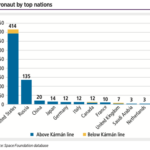
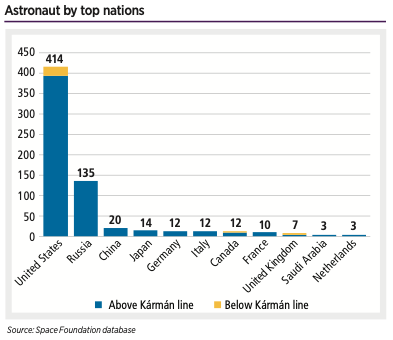
The majority of astronauts (95%) have also reached the Kármán line at 100 km — the internationally recognized boundary of space.
SNAPSHOT: Global space economy
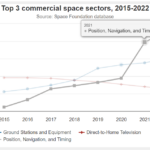
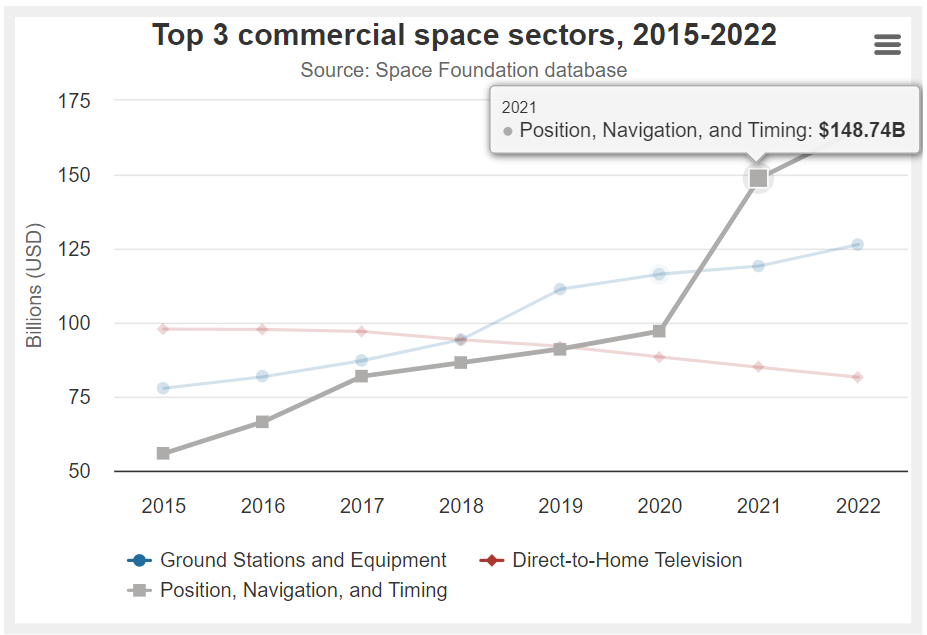
The global space economy totaled $546 billion in 2022, 8% higher than 2021 — and it could reach $772 billion by 2027, according to Space Foundation analysis.
SNAPSHOT: Human spaceflight
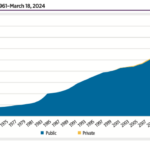
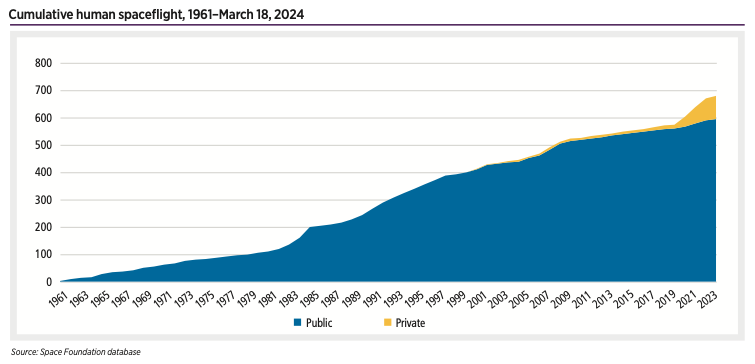
As of mid-March, 685 astronauts have reached at least 80 kilometers above the Earth’s surface. This total includes 86 private astronauts, 22 times as many as there were two decades ago.
Up to 14 Large Rockets and Tiny Competitors Are Poised for Launch in 2024

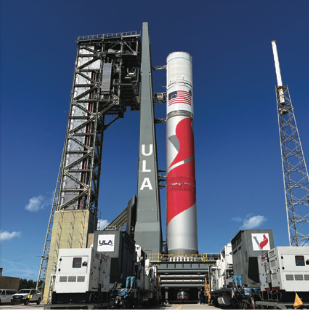
Space leaders in 2023 pondered a lack of launch vehicles to lift anticipated swarms of satellites to orbit. But 2024 could bring relief.
Astronaut and Mission Count for Top Nations

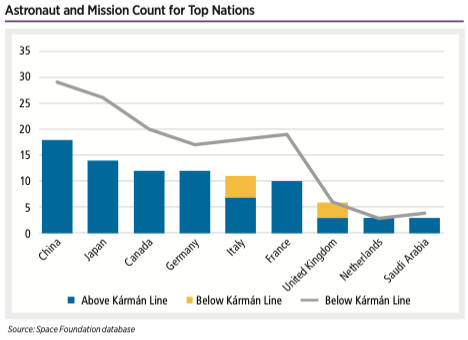
Public astronauts typically complete multiple missions in space over their careers — 65% have two or more flights compared to only 9% of private space travelers. Retired NASA astronaut Frederick “CJ” Sturckow remains the only person to have visited space eight times.
SNAPSHOT: Human Spaceflight
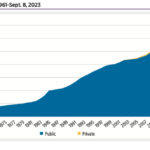
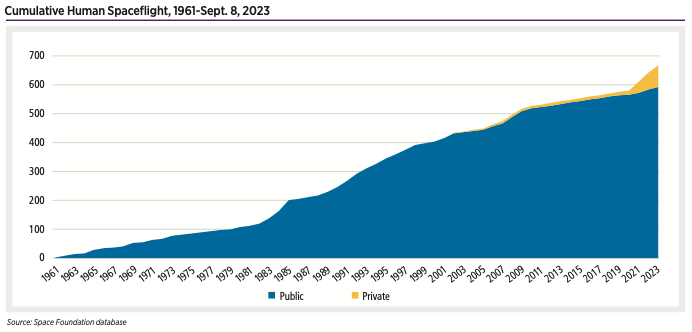
From the early days of the space race, sending humans to space has always been a key priority. The International Space Station (ISS) has maintained a continuous human presence in orbit for more than 20 years, and microgravity research on space stations has provided valuable insight for future long-term human missions in space.
CNES Space Spending by Type, 2005-2021
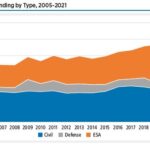
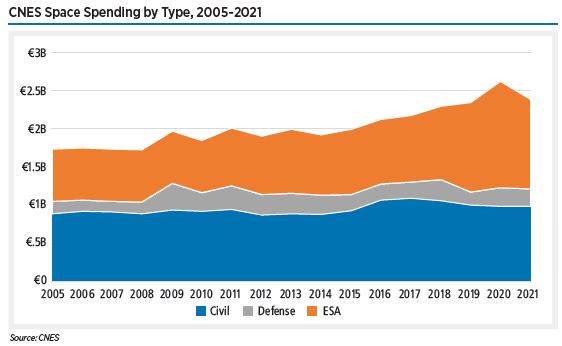
Including defense spending and contributions to third parties such as ESA, France’s total space spending in 2021 was the fourth-largest in the world behind the U.S., China, and Japan.
Expenditures by program are not available yet for 2022 but launch vehicle development tends to be the largest portion of CNES’ budget. From 2017 to 2021, the Ariane program composed an average of 32% of the agency’s non-ESA expenditures.
France Space Budget, 2005-2021
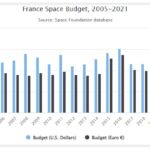

The majority of the French space budget goes to the French space agency, the Centre National d’Études Spatiales (CNES). About 36% of CNES spending, went toward ESA projects. An additional 31%, of CNES spending went to the national space program. The remaining funds, were allocated for maintaining national resources and the Future Investment Program (PIA).
Per Nation Mass Share of an Estimated 973,000 KG, 2022
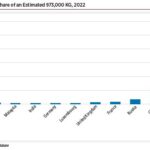
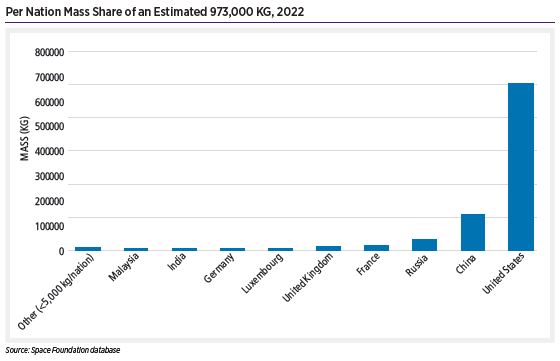
Operators deployed ~421 spacecraft with a mass of 200 kg or less, 18% of all deployed spacecraft in 2022. SpaceX’s Starlink satellites comprised over half the spacecraft mass deployed in 2022. The company’s Starlink deployments added up to 518,523 kg, nearly double the 257,140 kg it deployed in 2021. The largest spacecraft deployed during 2022 was Lockheed Martin’s Orion space capsule (25,848 kg), deployed during NASA’s first Artemis/Space Launch System launch.
Index Weight by Listing Country as of Dec. 16, 2022

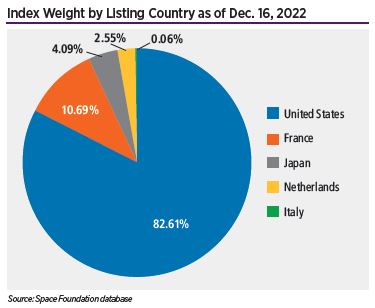
As of December, U.S.-listed companies comprised 82.61% of the weight of the overall index, with France in second place at 10.69%, Japan at 4.09%, the Netherlands at 2.55%, and Italy at 0.06%. Canada was no longer represented due to the removal of MDA, and Italy’s share dropped by a factor of 10 due to the removal of Avio.